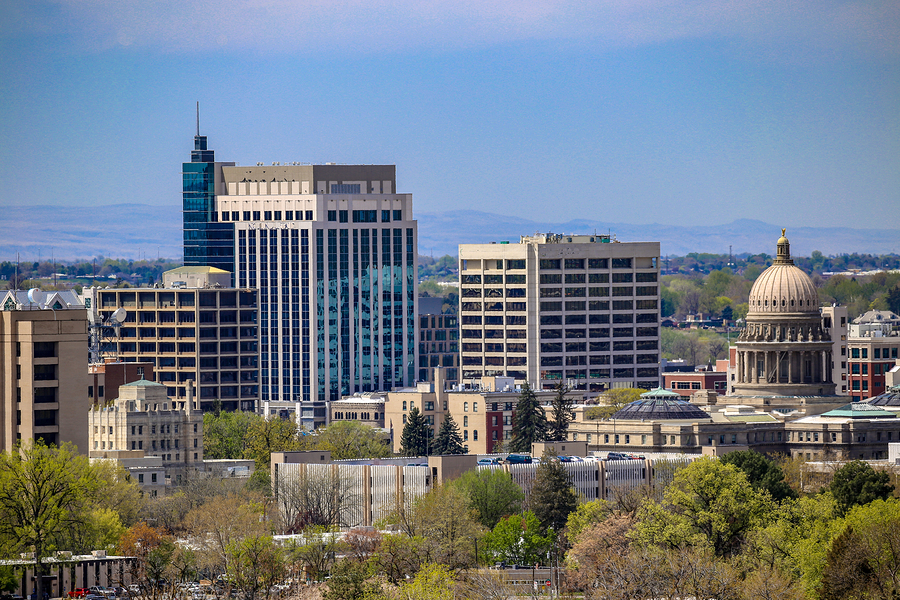Millennials and Generation Z are famous for breaking the mold. The way they shop, the way they eat, and the way they communicate are vastly different than Boomers and even Gen X. And the way they work — and where they choose to do it — is no exception.
The younger workforce is steering away from the bright lights of big cities. Instead, these financially-savvy generations are calling more affordable locales like Virginia Beach and Denver home.
Millennials will soon outnumber Boomers. Gen Z is beginning to enter the workforce. Commercial property developers need to take note and start developing in metros where young people are launching and growing their careers.
Below is a list of cities included in 2018’s Emerging Trends in Real Estate “U.S. Markets to Watch: Overall Real Estate Prospects” that you should consider for your next commercial development. You’ll notice plenty of underrated, modestly-sized cities make the list — it’s full of surprises.
Here are a few notes before we dive in.
- Population numbers are based on 2016 Census data.
- An 18-hour city is defined as “a second-tier city with higher-than-average urban population growth and featuring a lower cost of living and lower cost of doing business than first-tier cities.”
- City tier rankings are determined based on data such as population growth and the real estate market, but are still largely objective.
Where will you develop next?
Pacific Region
Seattle
- Population: 704,352
- Median sale price per square foot for office space (Seattle metro): $203.74
- City tier: Second-tier; 18-hour city
- Featured industries: Technology and aerospace
- Fun fact: Seven companies on 2018’s Fortune 500 list are headquartered in Seattle.
Orange County
- Population: 3.17 million
- Average rent per square foot for office space: $33 per square foot
- City tier: Adjacent to a Los Angeles, a top-tier (global) city
- Featured industries: Technology, construction, manufacturing, healthcare, and business
- Fun fact: Tourism is another prominent industry in Orange County, especially since the area features the gold standard of attractions: Disneyland.
South
Dallas
- Population: 1.318 million
- Median sale price per square foot for office space (metro): $146.17
- City tier: Second-tier; 18-hour city
- Featured industries: Technology, communications, defense, transportation
- Fun fact: Dallas is ranked #4 on Monster’s list of best cities for employment.
San Antonio
- Population: 1.493 million
- Median sale price per square foot for office space (metro): $143.06
- City tier: Second-tier
- Featured industries: Healthcare and bioscience, aerospace, IT and cybersecurity, new energy
- Fun fact: San Antonio outranked Austin in Millennial population growth from 2010 to 2015.
Mountain
Denver
- Population: 693,060
- Median sale price per square foot for office space (metro): $154.85
- City tier: Second-tier; 18-hour city
- Featured industries: Air transportation, telecommunications, aerospace, manufacturing, energy
- Fun fact: Denver’s Millennial population grew by 14.7% from 2010 to 2015.
Boise
- Population: 223,154
- Median sale price per square foot for office space (metro): $120.14
- City tier: N/A; growing market
- Featured industries: State government, tourism, technology
- Fun fact: Corporations from California, Florida, and Texas are relocating to Boise.
Midwest
Minneapolis
- Population: 413,651
- Median sale price per square foot for office space (metro): $97.07
- City tier: Third-tier; 18-hour city
- Featured industries: Manufacturing and technology
- Fun fact: Minneapolis-St. Paul is one of the largest cities in the United States with the lowest cost of living.
Cincinnati
- Population: 298,800
- Median sale price per square foot for office space (metro): $81.20
- City tier: Fourth-tier
- Featured industries: Energy, manufacturing, life sciences, branding, food, technology
- Fun fact: Cincinnati’s close proximity to Chicago and increased urbanization has contributed to its spot among the top 20 of cities for Millennials.
South Atlantic
Virginia Beach
- Population: 452,602
- Median sale price per square foot for office space (metro): $114.14
- City tier: N/A; growing market
- Featured industries: Defense, manufacturing, maritime, biomedical, IT
- Fun fact: In 2016, the number of Millennials who moved into Virginia Beach outpaced those moving out by 5,000 according to Census data.
Northeast
Pittsburgh
- Population: 303,625
- Median sale price per square foot for office space (metro): $74.88
- City tier: Third-tier; 18-hour city
- Featured industries: Manufacturing, energy, financial and business services,
healthcare and life sciences, information technology - Fun fact: The recent influx of highly-educated Millennials is cited as a primary reason for recent economic growth.
Westchester County
- Population: 976,396
- Average rent per square foot for office space: $27
- City tier: Adjacent to New York City, a top-tier city
- Featured industries: Pharmaceuticals, food and beverage, financial
- This affordable alternative to New York City is urbanizing, attracting Millennial populations and small businesses.
Choosing a right-fit city for your next real estate development is an incredible accomplishment, but more tactful strategizing will have businesses waiting in line to see your new space. Book a time to speak with our team today and see how our smart building technology can help boost your property’s value.




